Bullet by Mark & Luke Finnila
April 17, 2008
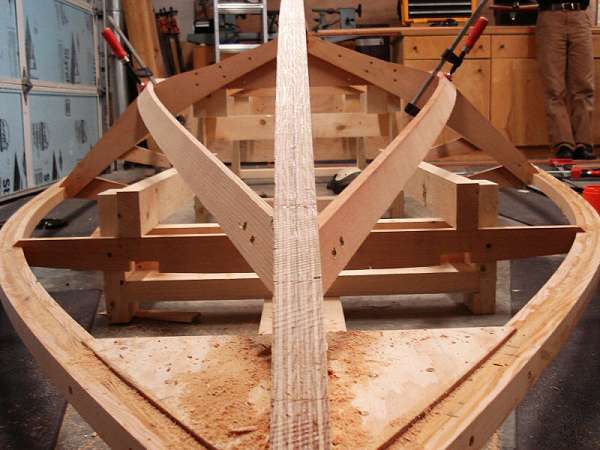
Our chine log landed nearly vertical at the stem. Achieving
a better angle was possible, but at the expense of landing
even closer to the sheer. I have a complete steamer for my
woodworking, but it was broken in two during our last move.
(I should have fixed it!)
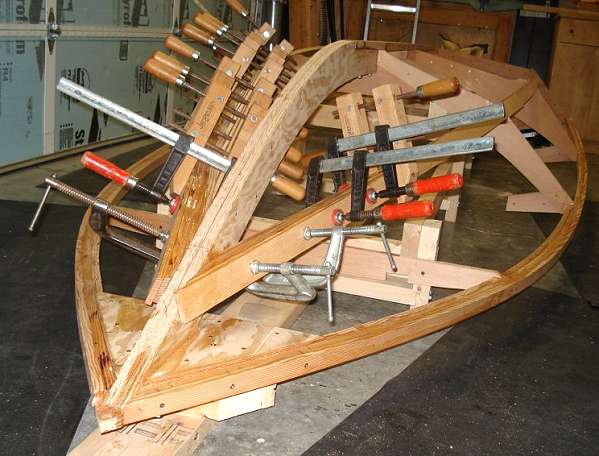
Wood is very accomodating. I laminated a half inch of
Douglas fir to the front portion of the chine. This allowed
me to correct the angle of the chine (using a Bosch power
planer for the rough work) so that the side panel could lay
flat between the chine and the sheer.
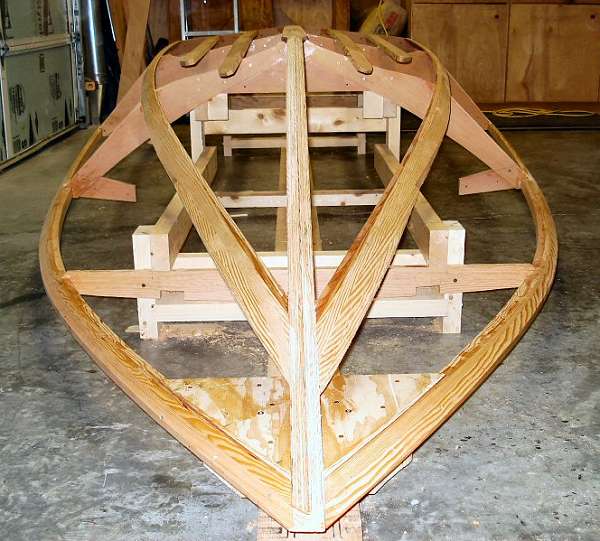
The chine is fixed and fairing is complete. Notice that the
sheer has a flat spot in it near the floor side. I should
have faired it farther as this created a gap between the side
panel and the deck that had to be filled with thickened
epoxy.
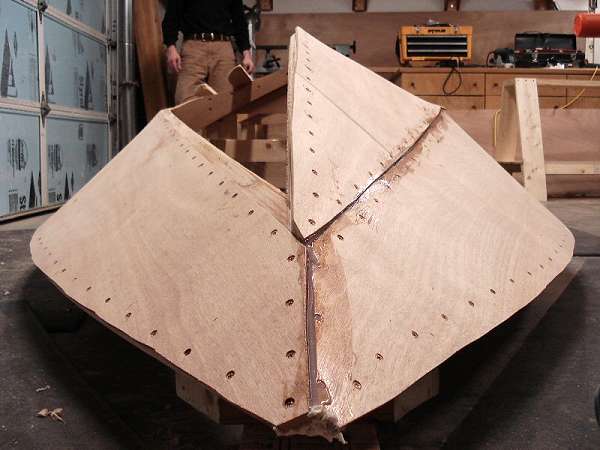
Both side panels and one bottom panel installed. I used a
black crayon on the edge of the installed side panel near the
bow to mark the underside of the bottom panel during fitting.
I cut too much off the very tip of the bottom panel during
rough fitting, but filled the small gap with epoxy.
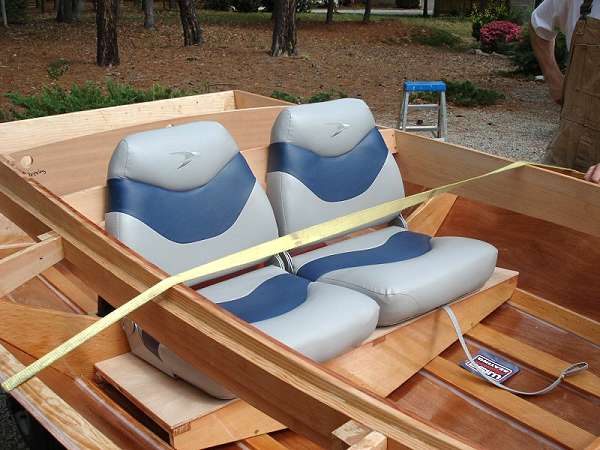
Wise folding seats at a 10 degree recline. I installed the
first rear deck beam at a matching 10 degrees so the seat
backs rest solidly against it. That will relieve stress from
the seat hinges. We filleted the battens and chines.
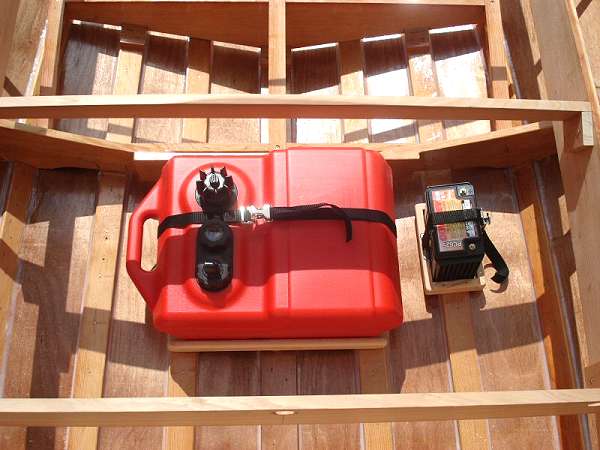
Simple fuel tank and battery tray. This is a 13-pound PWC
battery that meets the manufacturer’s requirements for
our engine.
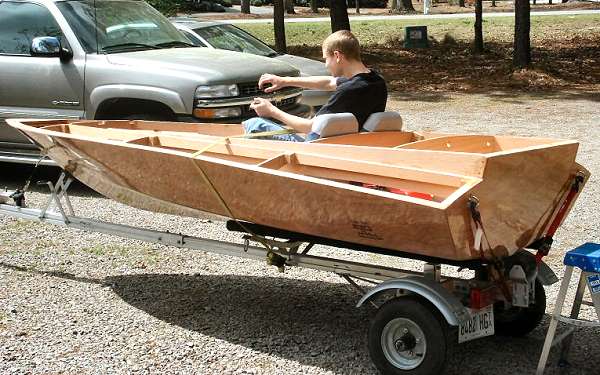
Three coats of System Three Silvertip resin provided a good
build up. We plan to paint the whole boat leaving no wood
exposed.
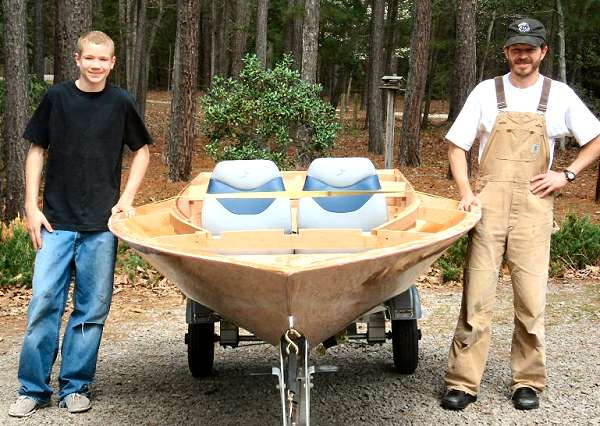
This is as far as we got prior to dropping the boat off for
motor installation on 8 Apr 08. We bought a 2007 Yamaha 25
hp, two-stroke, long-shaft, with electric start and remote
motor. Motor installation should be finished by early May. We
are hoping for an early June launch.
19 January 2009 Update
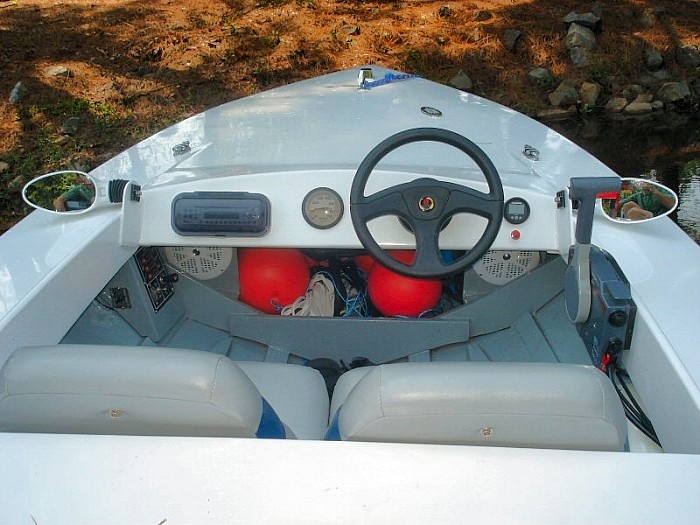
Cockpit: PWC mirrors greatly improved view for monitoring
skier. Switch box on port side controls bilge pump,
navigation/anchor lights, and bilge blower. Dash includes an
inexpensive stereo system, tachometer, depth finder, and
horn. Horizontally mounted horn on starboard bow collected
water, but I drilled a small hole that allowed it to drain
without sacrificing too much sound! Notice the ski buoys
stored under the deck.
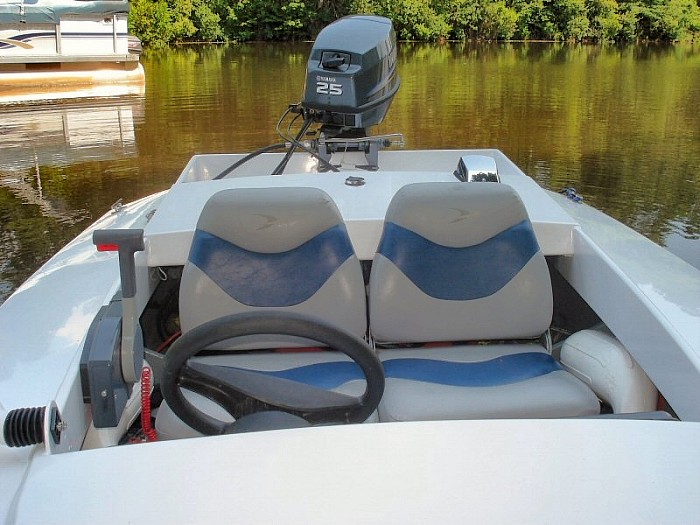
Stern: The Wise seats are very comfortable and their folding
feature allows us to store items under the stern deck. The
bilge blower vent is located on the port deck. The bilge pump
drains to the motor well.
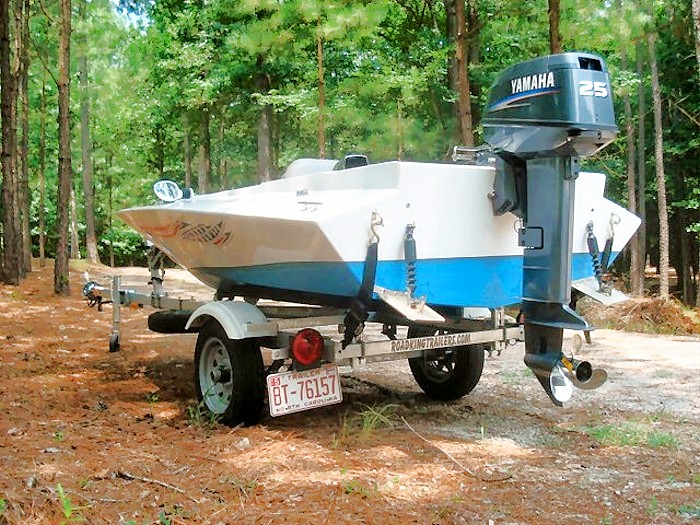
Transom: The standard transom height is about 1
½” too low for a Yamaha long-shaft motor. We
could raise it, but the current height probably allows
sharper turns before prop cavitation. (I’ll take the
sharper turn over the increased speed!) Interlux Micron Extra
bottom paint did a great job of eliminating slime as we kept
the boat moored most of the summer at a warm lake in North
Carolina. Smart tabs were an easy install and greatly
improved planing, cornering, tracking, and eliminated a
porposing/chine walk issue. The 11” pitch, stainless
steel, Turbo Hot Shot prop is a good for all-around use. A
13” pitch prop would increase speed, but sacrifice
towing ability.
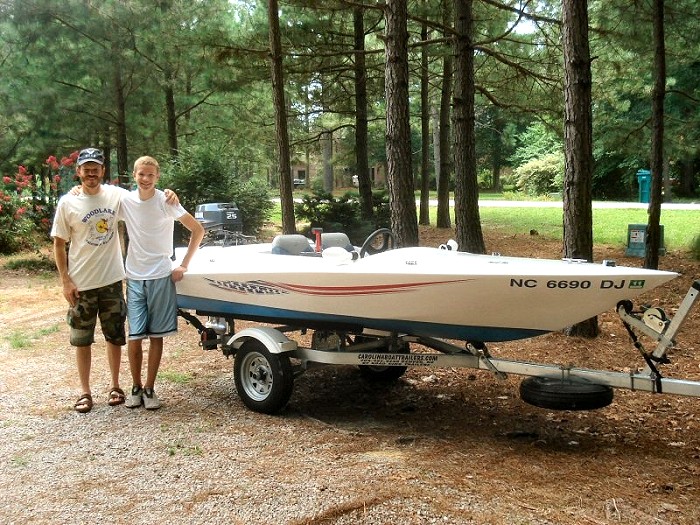
Father and Son Build Complete: The American flag graphic is
a vinyl decal from Raceline Digital graphics in Canada. It
was pricey, but definitely completed the look. This is a
photo of two very satisfied customers/builders!
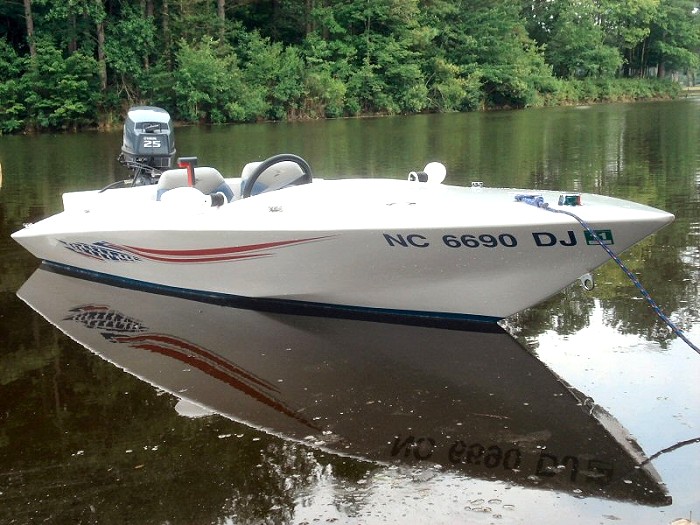
On the Water: This is what it’s all about…a
boat on the water.
NOTE: See Mark's story in WebLetter 126